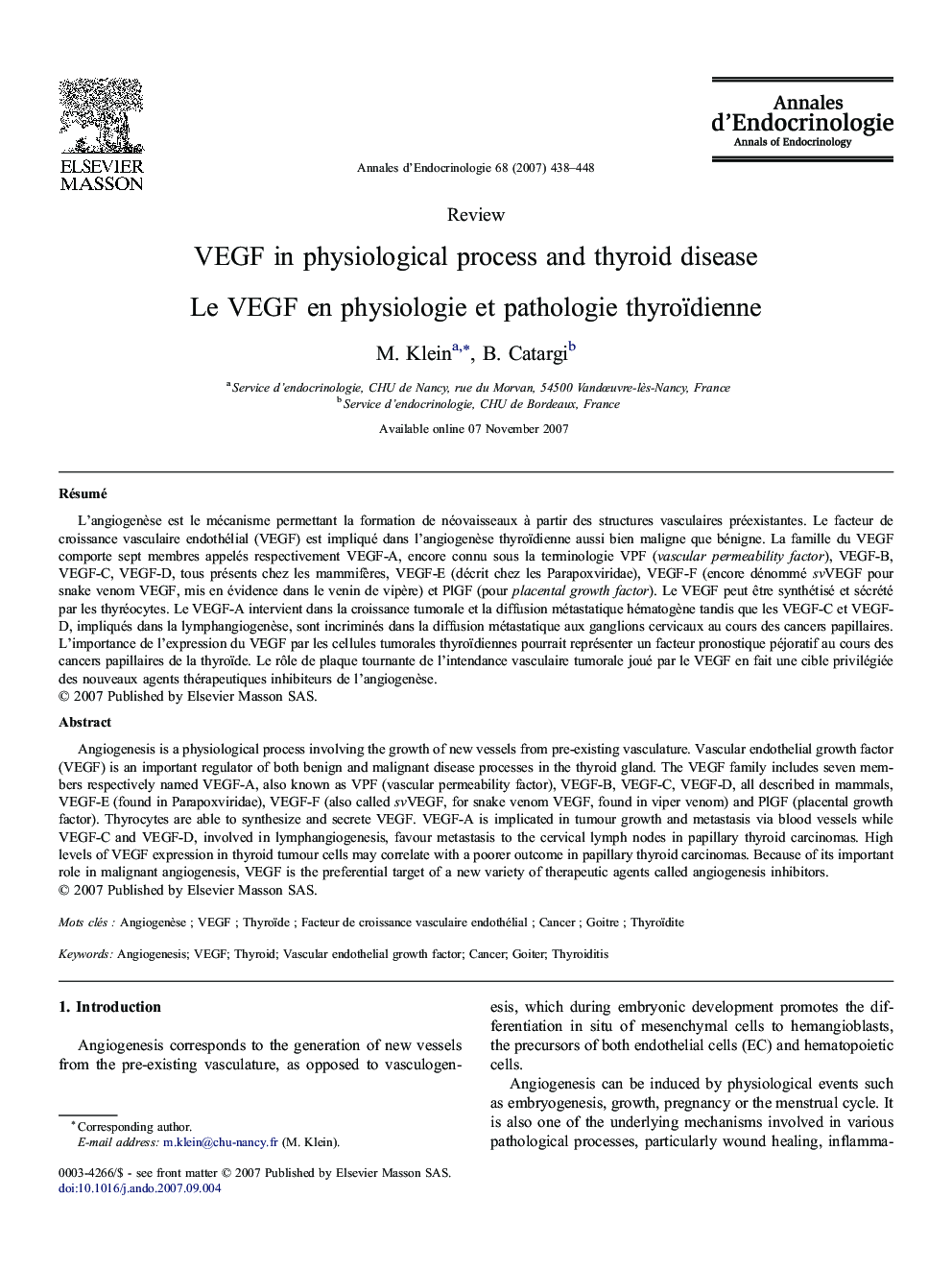| Article ID | Journal | Published Year | Pages | File Type |
|---|---|---|---|---|
| 3253177 | Annales d'Endocrinologie | 2007 | 11 Pages |
RésuméL'angiogenèse est le mécanisme permettant la formation de néovaisseaux à partir des structures vasculaires préexistantes. Le facteur de croissance vasculaire endothélial (VEGF) est impliqué dans l'angiogenèse thyroïdienne aussi bien maligne que bénigne. La famille du VEGF comporte sept membres appelés respectivement VEGF-A, encore connu sous la terminologie VPF (vascular permeability factor), VEGF-B, VEGF-C, VEGF-D, tous présents chez les mammifères, VEGF-E (décrit chez les Parapoxviridae), VEGF-F (encore dénommé svVEGF pour snake venom VEGF, mis en évidence dans le venin de vipère) et PlGF (pour placental growth factor). Le VEGF peut être synthétisé et sécrété par les thyréocytes. Le VEGF-A intervient dans la croissance tumorale et la diffusion métastatique hématogène tandis que les VEGF-C et VEGF-D, impliqués dans la lymphangiogenèse, sont incriminés dans la diffusion métastatique aux ganglions cervicaux au cours des cancers papillaires. L'importance de l'expression du VEGF par les cellules tumorales thyroïdiennes pourrait représenter un facteur pronostique péjoratif au cours des cancers papillaires de la thyroïde. Le rôle de plaque tournante de l'intendance vasculaire tumorale joué par le VEGF en fait une cible privilégiée des nouveaux agents thérapeutiques inhibiteurs de l'angiogenèse.
Angiogenesis is a physiological process involving the growth of new vessels from pre-existing vasculature. Vascular endothelial growth factor (VEGF) is an important regulator of both benign and malignant disease processes in the thyroid gland. The VEGF family includes seven members respectively named VEGF-A, also known as VPF (vascular permeability factor), VEGF-B, VEGF-C, VEGF-D, all described in mammals, VEGF-E (found in Parapoxviridae), VEGF-F (also called svVEGF, for snake venom VEGF, found in viper venom) and PlGF (placental growth factor). Thyrocytes are able to synthesize and secrete VEGF. VEGF-A is implicated in tumour growth and metastasis via blood vessels while VEGF-C and VEGF-D, involved in lymphangiogenesis, favour metastasis to the cervical lymph nodes in papillary thyroid carcinomas. High levels of VEGF expression in thyroid tumour cells may correlate with a poorer outcome in papillary thyroid carcinomas. Because of its important role in malignant angiogenesis, VEGF is the preferential target of a new variety of therapeutic agents called angiogenesis inhibitors.
